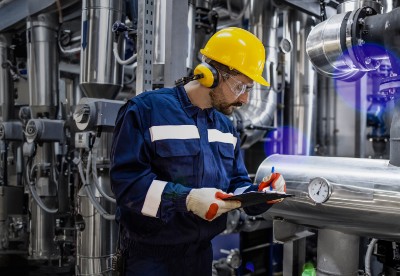Traditional energy companies will face many hurdles as the economy decarbonizes. In the long term, they’ll need to unlock entirely new product lines and business models. In the near term, they will need to emphasize efficiencies that will get them through a coming period of potentially low margins and high capital expenditures stemming from the energy transition.
One of the core strategies for this transition period will be to invest in technology solutions that will drive efficiencies in both oil and gas operations and subsequent low-carbon products. Where should they start? In the near term, they will achieve some of the most significant returns on investment by prioritizing asset performance management.
Advanced asset performance management strategies, collectively referred to as “Asset Performance Management 4.0,” are redefining the asset management paradigm across all asset-intensive industries, bringing new horizons of visibility and responsiveness. APM 4.0 is already beginning to make a significant impact in the energy business. Early adopters are finding that emerging APM 4.0 capabilities significantly reduce the impact of downtime and equipment failures on their bottom line.
As they transition to new low-carbon models, energy companies will need to take advantage of every competitive edge they can find. As such, APM 4.0 can be an impactful catalyst on the path toward decarbonization.
How Energy Companies Are Using APM 4.0
APM 4.0 brings together emerging technologies such as cloud, big data management, complex systems modelling, advanced analytics, AI/ML, digital twins, and the Industrial Internet of Things (IIoT) to strategically forecast and plan asset maintenance and optimize the productivity of the asset lifecycle.
For energy companies, an integrated APM 4.0 approach can begin making an impact on the asset lifecycle long before assets are brought online. Working with one large energy client, we recently implemented a digital passport that tracks assets across an open consortium of operators, EPCs, OEMs, logistics providers, vendors, and inspectors. In addition to standardizing asset documentation and creating a single source of truth for the asset pipeline, such digital passports can minimize asset downtime and maximize asset utilization as new assets come into production, deliver impressive ROI by reducing both Capex and downstream Opex expenditures, and minimize knowledge loss through digitalization.
Once assets are in production, AI becomes one of the fundamental pillars of emerging APM 4.0 strategies. AI/ML-based failure prediction can enhance asset availability, OEE, and margins across the enterprise. In particular, AI is a crucial component in moving from predictive maintenance to truly prescriptive maintenance. Current AI capabilities are getting much better at not just predicting asset failures, but at recommending optimal responses in real time. In one recent client project, our AI models achieved more than 85% accuracy in anomaly and failure prediction – more than sufficient for a successful implementation. The solution is already reducing the client’s asset-related production losses by 10,000 hours per year across 45 petrochemical plants.
Across the board, we have observed first-hand that comprehensive APM solution upgrades can make a significant bottom-line impact. By moving from a legacy on-premise APM solution to a more flexible cloud-based solution, one of our energy clients has achieved 80% faster calculations through data analytics, a 20% reduction in overall asset costs, a 30% reduction in IT infrastructure costs, and IT support cost savings of 20%.
These are the exact sorts of solutions that energy businesses will need as they strive for optimal margins in preparation for a long and complicated energy transition. Furthermore, these gains can have decarbonization implications even when they are applied to hydrocarbon value streams: Increased operational efficiencies inherently put companies farther along on their sustainability journeys.
Assessing APM 4.0 Preparedness to Seize the Energy Future
The main purpose of APM 4.0 is to establish a high degree of connectivity among assets, people, process, and technology. To achieve this connectivity without getting overwhelmed by the sheer complexity of so many moving parts, energy companies need to ask some key questions:
- Business context: What are the core business targets? How rigorously does the enterprise track key performance indicators and what sustainability/environmental factors will have the biggest impact on asset operations moving forward?
- Maintenance and operations: What is the "as-is” state of the organization, processes, and IT/OT systems? How mature is the inter-connectivity between all the components?
- Asset condition: What is the current overall condition of assets within the plant system? (Conditions may include design state, instrumentation, connectivity, adopted maintenance strategy, and operating procedures in addition to physical condition, as all these factors can impact the intensity of APM activities.)
 Locations
Locations



